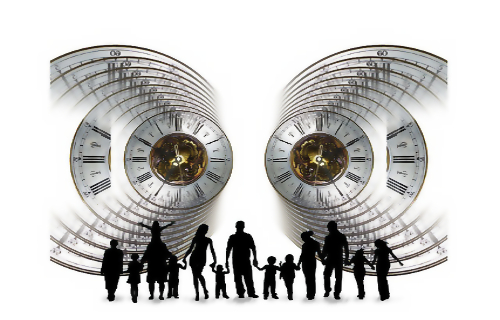News & Events
10-10-10: 10 Days, 10 Months, 10 Years
- November 17, 2014
- Posted by: Mike Rucker
- Category: Coaching Models

What is the 10-10-10 decision making method?
The 10-10-10 decision making method goes by several names (my favorite is the “diaper test”). It is fairly straightforward – there are a few variations – but the basic model is put to use when faced with a tough decision, and calls upon you to frame your perspective in new ways by visualizing different points in time. When a hard decision arises, you ask yourself three questions:
- How will my decision affect me in the next 10 minutes?
- How will my decision affect me in the next 10 months?
- How will my decision affect me in the next 10 years?
The benefit of using this method is you can potentially avoid pitfalls that manifest due to short-sided thinking. Good decisions are made when the decision maker has sufficient information, while in contrast many poor decisions can be attributed to a lack of information. Considering your decision from three different perspectives enables you to consider multiple scenarios, which in turn enables you to amass more quality data to determine your best course of action. When you are able to distance yourself from your current reality, you are better able to understand possible long-term consequences associated with various choices.
Practical example of the 10-10-10 decision making method
Let’s take the example of a father who is mulling over a decision to move his family out of the country for an opportunity with his current employer, an opportunity that would increase his salary:
What will happen in the next 10 minutes if he makes this decision?
Given that he has been in his community for a long time, he will probably be facing a tough sell with his family. Chances are there will be blowback from his kids, and his wife too. They will likely be upset. His company will be appreciative. No one else wanted the job and it comes with a salary increase. The cost of living in the new country is less than where his family lives now so the economic benefit is significant.
What might happen in the next 10 months if he makes this decision?
His family is still having a hard time adjusting to the new environment, but stays connected with their family and friends through social media. They are all excited for the upcoming holidays because part of accepting the relocation offer was two paid trips home each year for the entire family. Work is great because they recognize some of the sacrifices involved in the relocation.
Fast forward, 10 years down the line, where will he be?
The entire family in now back in the original country. They moved back seven years ago, but now sometimes miss the other country and have gone back twice for vacations. The entire family survived the experience and is more worldly having had the opportunity to live within another culture. The father’s career path was accelerated due to his commitment to the company and he is now a senior vice president making a considerable income.
Summary of the 10-10-10 Decision Making Method
By analyzing a given situation from three angles, you allow yourself to be emotionally divested, which in theory will allow you to make a better decision. In the scenario above the father might not take the opportunity if he was shortsighted, but looking at the situation from different points in time might make him more confident that accepting the opportunity has more upside once the entire decision plays out.
This method is applicable in a wide range of decision making scenarios. From parents to business executives – anyone who has to make important decisions can benefit from weighing the impact of their respective choice from different perspectives.
Here are a few additional reasons this method is so effective:
- Helps you to think clearly – once you have considered the problem thoroughly (thoroughly analyzing the pros and cons over various time periods), you will be better equipped to make a sound decision. The method gives you more opportunities to identify potential pitfalls; your thought process will automatically direct you to stop and move on to the next option if you see a particular option’s risks outweigh the benefits.
- Helps you convert your thoughts into firm commitments through visualization – using the 10-10-10 decision making method helps you better visualize not just the consequences of your choice, but also the future benefits. As we’ve discussed in earlier posts, strengthening the underlying “why” behind a decision has a lot of potential upside.
- Helps build confidence and instill a greater desire to achieve – increased confidence in a decision generally translates in a greater desire to achieve. It reduces anxiety and worry which decreases the likelihood that you waiver from the right course of action.
Great decision making is a required attribute for high performing individuals. Few would argue that our choices are what plot and define our destiny. The course of our lives change based on our available options, which is why using methods that increase our available options are so important. The 10-10-10 decision making method is an easy, effective way for anyone hoping to make better choices.

